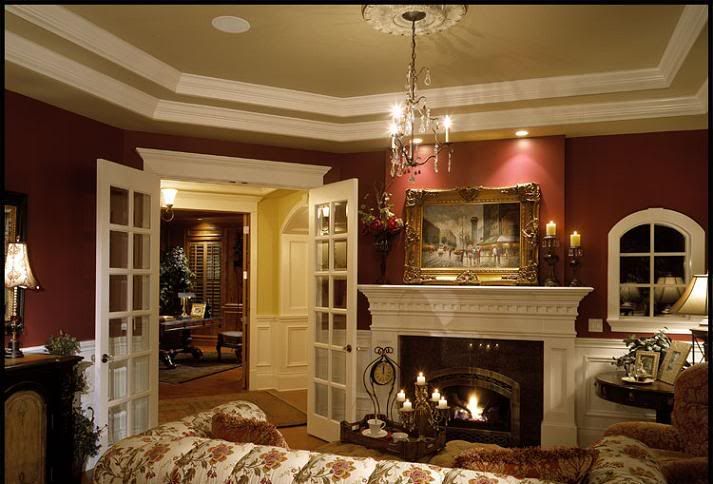Illustration: Frida Hansen Tapestry door hanging 1900
In her tapestry work the Norwegian designer Frida Hansen wisely interpreted the discipline as woven painting. In so many cases over the centuries the composition, if not the technique of tapestry weaving, has followed a fine art route often using cartoons or reinterpretations of well established fine artists whose work was more used to being seen on canvas.
The tapestry piece shown here was produced by Hansen for the 1900 Exposition Universelle held in Paris. It was actually made by Det Norske Billedvoeveri (The Norwegian Weaving Society) whose artistic director was none other than Hansen. It was awarded a gold medal at the Exposition, one of the reasons for which was the technique of construction itself. Hansen pioneered her own interpretation of what she termed transparent weaving. This involved leaving some of the areas of the warp exposed and therefore under woven, as opposed to the conventionally woven areas. The two contrasting areas of weaving were also often separated colour wise, so that for example, conventionally woven areas would be highly coloured, while the seemingly transparent areas would be more subdued colour wise. By also using the composition to reflect these changes, such as using a transparent background and a conventionally woven foreground, spectacular results could be achieved.
This particular tapestry door hanging or door curtain was meant to hang within a door entrance space where the full effect of the semi-transparency of the woven piece could be appreciated in its entirety. It must have been very effective and impressive at the Exposition, so much so that the V&A purchased the piece in Paris in 1900 and has been in their collection ever since. Unfortunately the work was never particularly practical and so is fragile, but heavy and has to be supported on a backboard thus losing its original effect. However, it is still a positively stunning piece and shows to great effect the real skill, not only of Hansen, but also that of Det Norske Billedvoeveri.
Hansen herself was often criticised inside Norway for not more fully making her work more amenable to the indigenous culture of Norway. This had much to do with the Norwegian struggle for independence from its neighbours Sweden and Denmark and the attempt to separate Norwegian culture from that of its occupiers. However, although Hansen understood the concerns regarding the preservation and reinterpretation of Norse culture, she was unconvinced that it should be uttermost in her work. Although Hansen herself did produce a certain amount of work based on Norwegian myths and legends, she felt herself to be more in tune with the European popular internationalism of the period, particularly seen within the decorative arts world with international movements such as Art Nouveau in which she became closely associated style wise.
In some ways Hansen felt that as a Norwegian, it was perhaps more beneficial for her and her work to be seen as looking outward and forward, rather than that of looking inward and backward. This by no means criticises either those who saw Norwegian independence best served by a reliance on traditional crafts, or those who saw the future of Norway as being part of a more internationally inspired craft tradition. In fact the two seemingly incongruous visions did achieve a lasting reputation and direction for the country's craft and design framework.
By emphasising the importance of traditional and indigenous craft skills, but also managing to maintain and increasingly develop an international presence and outlook, Norway has been able to place itself at the forefront of contemporary craft design, while still maintaining its traditions. The country now has some of the leading craft designers and artists in Europe, along with an impressive infrastructure of support for the crafts through events, exhibitions and galleries headed by the Norske Kunsthandverkere (Norwegian Association for Arts & Crafts) a link to which is given below in the Reference links section.
Reference links:
Norske Kunsthandverkere (Norwegian Association for Arts & Crafts) website
Norwegian Touches: History, Recipes, Folk Arts Notably Norwegian
Norwegian Handknits: Heirloom Designs from Vesterheim Museum
Norwegian Folk Art: The Migration of a Tradition
Norwegian Native Art
Norwegian Tapestry Weaving
Scandinavian Design (Taschen 25)



















No comments:
Post a Comment